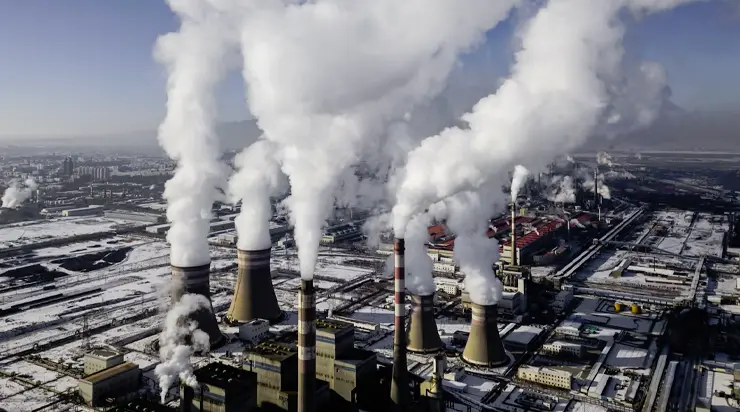Global carbon dioxide emissions from energy sources reached an unprecedented peak in the year 2023
The International Energy Agency (IEA) reported that global energy-related carbon dioxide (CO2) emissions reached a record high last year.
This increase was driven in part by the use of fossil fuels in countries where hydropower production was hindered by droughts. Scientists emphasize the urgent need for significant reductions in CO2 emissions, particularly from burning fossil fuels, in order to meet global temperature targets and prevent further climate change.
The IEA’s analysis revealed that global energy emissions rose by 410 million tonnes, or 1.1 percent, in 2023, reaching a total of 37.4 billion tonnes.
While the expansion of clean technologies like wind, solar, and electric vehicles helped slow down emissions growth to 1.3 percent in 2022, the reopening of China’s economy, increased fossil fuel use in countries with limited hydropower, and a recovery in the aviation sector contributed to the overall rise in emissions.
The IEA also highlighted that efforts to compensate for the loss of hydropower due to extreme droughts accounted for around 40 percent of the emissions increase. Without this factor, emissions from the global electricity sector would have actually decreased in 2023.
Notably, energy-related emissions in the United States decreased by 4.1 percent, primarily driven by reductions in the electricity sector. In the European Union, energy emissions fell by nearly nine percent, thanks to a surge in renewable power generation and a decline in coal and gas power generation.
On the other hand, China experienced a 5.2 percent increase in energy emissions due to growing energy demand as the country recovered from COVID-19-related lockdowns.
However, China also played a significant role in global additions of solar, wind power, and electric vehicles, accounting for approximately 60 percent of these additions in 2023, according to the IEA.



